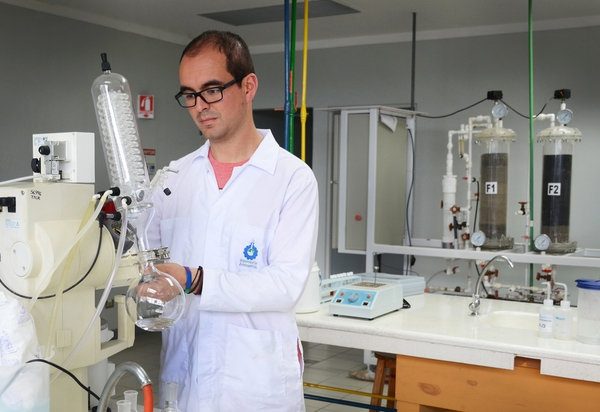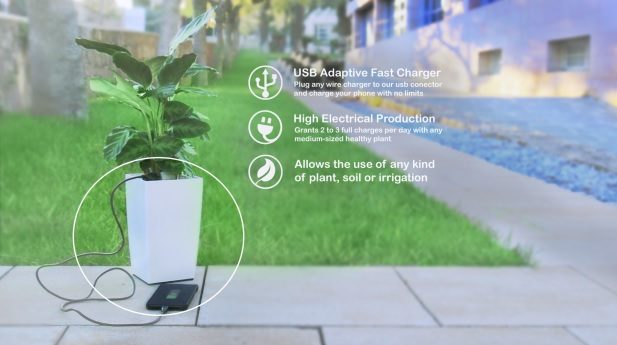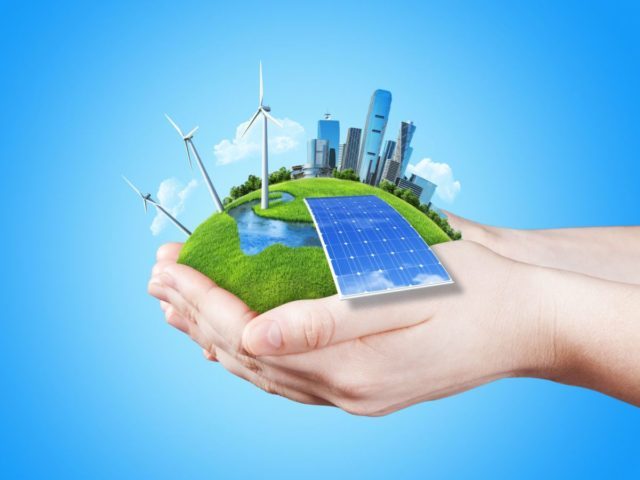| Would you like to charge your mobile phone through a plant? This is viable thanks to the research carried out by the chemist Isaac Céspedes Camacho, who devised a mechanism to take advantage of the energy produced during the process of photosynthesis, re-direct it to a solar cell and, from there, drive it through a cable to the battery of the phone. It is just the 1st practical example of many other uses that may be given in the future to this new source of alternative energy, said Céspedes, a professor at the Technological Institute of Costa Rica (ITCR). |

According to him, little energy was obtained (the mobile phone could be charged by 30%). They were able to verify that it is possible to imitate what the vegetation does, that is, capture the sunlight and convert this energy light in chemical energy, which is what plants then use to perform all of their functions.
“From now on, the challenge is to enhance this energy. I hope that in a few years, maybe 2, we can develop more advanced equipment that allows us to obtain high amounts of clean energy, which can be used in our electronic equipment such as computers and appliances and other practical uses,” said the scientist.
The so-called spins (a property of the electron) located in the leaves are, in fact, responsible throughout this process of energy generation.

Spins: key pieces
But, what does it consist of? Céspedes explains it in a simple way. There are several components which interact in photosynthesis; sunlight, for example, generates a reaction in the plant where the electrons intervene and, within them, there are the spins. These, in turn, react due to the magnetic field of the Earth, generating electric energy.
“This is the 1st time that the influence of spins on photosynthetic organisms and magnetic fields close to our planet is measured. With this discovery, it opens a door to a number of practical applications, using spins as an alternative energy source, which is not only safe but clean”, said the researcher.
Previously, other findings around the world had made experiments on organisms that made photosynthesis but at very high magnetic fields. These results gave useful information but were not practical. The challenge was to look for lower magnetic fields, although there is the recent discovery of the Costa Rican scientist to imitate what plants do.
1st steps
The history of his findings dates back 4 years ago when he was doing his 1st research with the nuclear magnetic resonance teams in the Netherlands (in Europe). There, he realized the role that spins have during photosynthesis and that, perhaps, energy could be obtained from them. With this concern, he returned to Costa Rica to continue his research and join the national efforts to look for alternative energy sources.

In order to achieve this, he sought support from other scientists at the University of Leipzig, Germany. Engineers from Bruker Biospin (a company that manufactures scientific instrumentation), and ITCR professionals, specifically from the School of Chemistry and Environmental Engineering, finally joined his project. Currently, the research involves an interdisciplinary team composed of chemists, electrical engineers, physicists, mathematicians, and biochemists.
“There is much to do. You have to study different plants (up to now, only aquatic plants have been used) and organisms that produce photosynthesis, and analyze the chemical reactions of their spins in order to generalize our discovery to the whole plant world. We have to scale up what we have obtained in the laboratory, that is, be able to design and build a team that imitates the photosynthetic process and generates a considerable amount of energy”, the Costa Rican scientist concluded.
